I discovered Patricia Highsmith in college when I took a course called “Midcentury Queer Writing” and absolutely fell in love with both The Talented Mr Ripley and The Price of Salt. Since them, I’ve read some re-imaginings of Ripley and enjoyed them as well, so why not take a look at Highsmith’s greatest hits today?
The Mr. Ripley Series
Since his debut in 1955, Tom Ripley has evolved into the ultimate bad boy sociopath. Here, in the first Ripley novel, we are introduced to suave Tom Ripley, a young striver, newly arrived in the heady world of Manhattan. A product of a broken home, branded a “sissy” by his dismissive Aunt Dottie, Ripley meets a wealthy industrialist who hires him to bring his playboy son, Dickie Greenleaf, back from gallivanting in Italy. Soon Ripley’s fascination with Dickie’s debonair lifestyle turns obsessive as he finds himself enraged by Dickie’s ambivalent affections for Marge, a charming American dilettante. A dark reworking of Henry James’s The Ambassadors, The Talented Mr. Ripley serves as an unforgettable introduction to this smooth confidence man, whose talent for murder and self-invention is chronicled in four subsequent Ripley novels.
The Price of Salt or Carol
A chance encounter between two lonely women leads to a passionate romance in this lesbian cult classic. Therese, a struggling young sales clerk, and Carol, a homemaker in the midst of a bitter divorce, abandon their oppressive daily routines for the freedom of the open road, where their love can blossom. But their newly discovered bliss is shattered when Carol is forced to choose between her child and her lover.
Deep Water
Vic and Melinda Van Allen’s loveless marriage is held together only by a precarious arrangement whereby, in order to avoid the messiness of divorce, Melinda is allowed to take any number of lovers as long as she does not desert her family. Eventually, Vic can no longer suppress his jealousy and tries to win back his wife by asserting himself through a tall tale of murder—one that soon comes true. In this complex portrayal of a dangerous psychosis emerging in the most unlikely of places, Highsmith examines the chilling reality behind the idyllic facade of American suburban life.
Strangers on a Train
The world of Patricia Highsmith has always been filled with ordinary people, all of whom are capable of very ordinary crimes. This theme was present from the beginning, when her debut, Strangers on a Train, galvanized the reading public. Here we encounter Guy Haines and Charles Anthony Bruno, passengers on the same train. But while Guy is a successful architect in the midst of a divorce, Bruno turns out to be a sadistic psychopath who manipulates Guy into swapping murders with him. “Some people are better off dead,” Bruno remarks, “like your wife and my father, for instance.” As Bruno carries out his twisted plan, Guy is trapped in Highsmith’s perilous world, where, under the right circumstances, anybody is capable of murder.
The Tremor of Forgery
Set in Tunisia in the mid-1960s, this is the story of Howard Ingham, an American writer who has gone abroad to gather material for a movie too sordid to be set in America. Ingham is cool toward the girlfriend he left behind in New York—but his feelings start to change when she doesn’t answer his increasingly aggravated letters, and the filmmaker who hired Ingham fails to show in Tunisia.
Amid the tea shops and alleys of the souk, the sun-blasted architecture, and the beaches and hotels frequented by international tourists, Ingham tries to pass the time by working on a writing project. But a series of peculiar events—a hushed-up murder, a vanished corpse, secret broadcasts to the Soviet Union—will pull him in, and may finally put his increasingly fragile sense of morality to the test.
Those Who Walk Away
Ray Garrett, a wealthy young American living in Europe, is grieving over the death of his wife. Ray is at a loss for why she would take her own life, but Peggy’s father Ed Coleman, has no such uncertainty—he blames Ray completely.
Late one night in Rome, Coleman shoots Ray at point-blank range. He thinks he’s had his revenge, but Ray survives, and follows Coleman and his wealthy girlfriend to Venice.
In Venice, it happens again: Coleman attacks his loathed son-in-law, dumping him into the cold waters of the laguna. Ray survives with the help of a boatman—and this time he goes into hiding, living in a privately rented room under a fake name. So begins an eerie game of cat-and-mouse. Coleman wants vengeance, Ray wants a clear conscience, and the police want to solve the mystery of what happened to the missing American.
Two Two Faces of January
In a grubby Athens hotel, Rydal Keener is bored and killing time with petty scams. But when he runs into another American, Chester MacFarland, dragging a man’s body down the hotel hall, Rydan impulsively agrees to help, perhaps because Chester looks like his father.
Then Rydal meets Collete, Chester’s younger wife, and captivated, becomes entangled in their sordid lives, as the drama marches to a shocking climax at the ruins of the labyrinth at Knossos.
A Suspension of Mercy
With the acclaim for The Talented Mr. Ripley, more film projects in production, and two biographies forthcoming, expatriate legend Patricia Highsmith would be shocked to see that she has finally arrived in her homeland. Throughout her career, Highsmith brought a keen literary eye and a genius for plumbing the psychopathic mind to more than thirty works of fiction, unparalleled in their placid deviousness and sardonic humor. With deadpan accuracy, she delighted in creating true sociopaths in the guise of the everyday man or woman. Now, one of her finest works is again in print: A Suspension of Mercy, a masterpiece of noir fantasy. With this novel, Highsmith revels in eliciting the unsettling psychological forces that lurk beneath the surface of everyday contemporary life.
The Blunderer
For two years, Walter Stackhouse has been a faithful and supportive husband to his wife, Clara. She is distant and neurotic, and Walter finds himself harboring gruesome fantasies about her demise. When Clara’s dead body turns up at the bottom of a cliff in a manner uncannily resembling the recent death of a woman named Helen Kimmel who was murdered by her husband, Walter finds himself under intense scrutiny. He commits several blunders that claim his career and his reputation, cost him his friends, and eventually threaten his life. The Blunderer examines the dark obsessions that lie beneath the surface of seemingly ordinary people. With unerring psychological insight, Patricia Highsmith portrays characters who cross the precarious line separating fantasy from reality.
Eleven
Eleven is Highsmith’s first collection of short stories, an arresting group of dark masterpieces of obsession and foreboding, violence and instability. Here naturalists meet gruesome ends and unhinged heroes disturb our sympathies.
This Sweet Sickness
David Kelsey, a young scientist, has an unyielding conviction that life will turn out all right for him; he just has to fix the Situation: he is in love with a married woman. Obsessed with Annabelle and the life he has imagined for them—including the fully furnished cabin he maintains for her—David prepares to win her over, whatever it takes. In this riveting tale of a deluded loner, Highsmith reveals her uncanny ability to draw out the secret obsessions that overwhelm the human heart.
People Who Knock on the Door
With the savage humor of Evelyn Waugh and the macabre sensibility of Edgar Allan Poe, Patricia Highsmith brought a distinct twentieth-century acuteness to her prolific body of fiction. In her more than twenty novels, psychopaths lie in wait amid the milieu of the mundane, in the neighbor clipping the hedges or the spouse asleep next to you at night. Now, Norton continues the revival of this noir genius with another of her lost masterpieces: a later work from 1983, People Who Knock on the Door, is a tale about blind faith and the slippery notion of justice that lies beneath the peculiarly American veneer of righteousness
The Glass Cell
Rife with overtones of Dostoyevsky, The Glass Cell, first published forty years ago, combines a quintessential Highsmith mystery with a penetrating critique of the psychological devastation wrought by the prison system. Falsely convicted of fraud, the easygoing but naive Philip Carter is sentenced to six lonely, drug-ravaged years in prison. Upon his release, Carter is a more suspicious and violent man. For those around him, earning back his trust can mean the difference between life and death. The Glass Cell’s bleak and compelling portrait of daily prison life―and the consequences for those who live it―is, sadly, as relevant today as it was when the book was first published in 1964.
The Cry of the Owl
In a small Pennsylvania town, Robert Forrester is recuperating from a nasty divorce and a bout of psychological trouble. One evening, while driving home, he sees a pretty young woman framed by her bright kitchen window. Soon, he can’t keep himself away. But when Robert is inevitably discovered, obsession is turned on its head, and he finds himself unable to shake the young woman, nor entirely sure whether he should. Recently made into a major motion picture starring Julia Stiles and Paddy Considine, The Cry of the Owl is essential Highsmith, a modern classic ready to be reborn.
The Black House
With Norton’s publication of The Black House, Patricia Highsmith’s entire body of work is now back in print. First published in 1981, this volume is one of Highsmith’s most nuanced and psychologically suspenseful works. The stories in The Black House mine classic Highsmith terrain as they sketch the lives of suburban dwellers that appear quite normal at first but unravel to reveal their proximity to the macabre. This collection is a perfect example of Highsmith’s view of human nature and a fitting capstone to the reintroduction of one of the twentieth century’s greatest writers.
A Dog’s Ransom
The great revival of interest in Patricia Highsmith continues with the publication of this novel that will give dog owners nightmares for years to come. With an eerie simplicity of style, Highsmith turns our next-door neighbors into sadistic psychopaths, lying in wait among white picket fences and manicured lawns. In A Dog’s Ransom, Highsmith blends a savage humor with brilliant social satire in this dark tale of a highminded criminal who hits a wealthy Manhattan couple where it hurts the most when he kidnaps their beloved poodle.
Little Tales of Misogyny
With an eerie simplicity of style, Highsmith turns our next-door neighbors into sadistic psychopaths, lying in wait among white picket fences and manicured lawns. In the darkly satiric, often mordantly hilarious sketches that make up Little Tales of Misogyny, Highsmith upsets our conventional notions of female character, revealing the devastating power of these once familiar creatures—”The Dancer,” “The Female Novelist,” “The Prude”—who destroy both themselves and the men around them. This work attests to Highsmith’s reputation as “the poet of apprehension” (Graham Greene).
Edith’s Diary
As Edith Howland’s life becomes harsh, her diary entries only become brighter and brighter. She invents a happy life. As she knits for imaginary grandchildren, the real world recedes. Her descent into madness is subtle, appalling, and entirely believable.
Plotting and Writing Suspense Fiction
In this book, she analyzes the key elements of suspense fiction, drawing upon her own experience in four decades as a working writer. She talks about, among other topics; how to develop a complete story from an idea; what makes a plot gripping; the use (and abuse) of coincidence; characterization and the “likeable criminal”; going from first draft to final draft; and writing the suspense short story.
Throughout the book, Highsmith illustrates her points with plentiful examples from her own work, and by discussing her own inspirations, false starts, dead ends, successes, and failures, she presents a lively and highly readable picture of the novelist at work.
Anyone who wishes to write crime and suspense fiction, or who enjoys reading it, will find this book an insightful guide to the craft and art of a modern master.


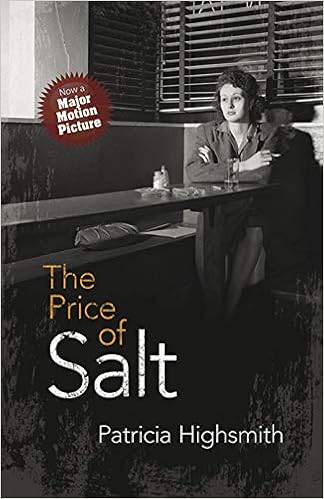
![Deep Water by [Highsmith, Patricia]](https://images-na.ssl-images-amazon.com/images/I/41ppJgmXzAL.jpg)

![The Tremor of Forgery by [Highsmith, Patricia]](https://images-na.ssl-images-amazon.com/images/I/41F6pfQuW2L._SY346_.jpg)
![Those Who Walk Away by [Highsmith, Patricia]](https://images-na.ssl-images-amazon.com/images/I/517%2BhmmkWRL.jpg)
![The Two Faces of January by [Highsmith, Patricia]](https://images-na.ssl-images-amazon.com/images/I/51CcWH6IaVL.jpg)
![A Suspension of Mercy by [Highsmith, Patricia]](https://images-na.ssl-images-amazon.com/images/I/51-%2BXvkM81L.jpg)
![The Blunderer by [Highsmith, Patricia]](https://images-na.ssl-images-amazon.com/images/I/41v6YOX9hKL._SY346_.jpg)
![Eleven by [Highsmith, Patricia]](https://images-na.ssl-images-amazon.com/images/I/51c3fYUI4ZL._SY346_.jpg)
![This Sweet Sickness by [Highsmith, Patricia]](https://images-na.ssl-images-amazon.com/images/I/41WfOTs-tsL.jpg)
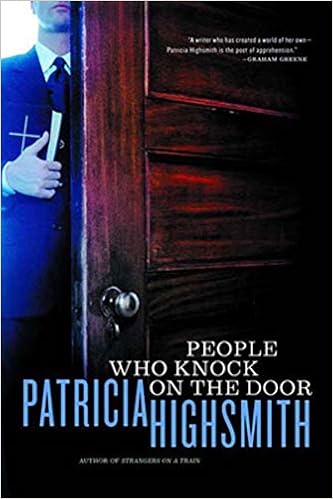
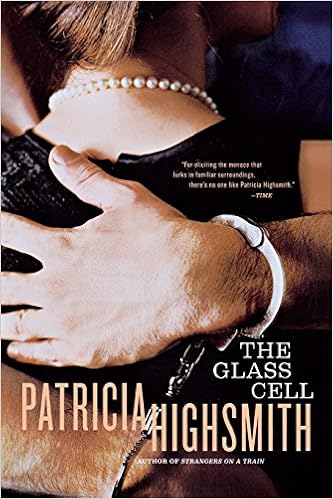


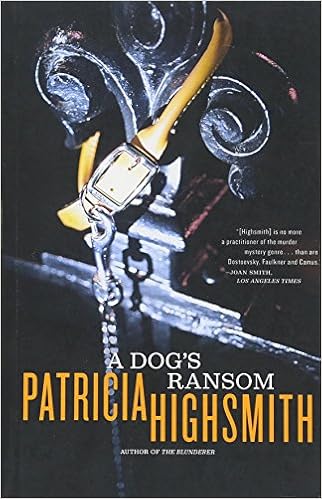
![Little Tales of Misogyny by [Highsmith, Patricia]](https://images-na.ssl-images-amazon.com/images/I/418E5SFinZL.jpg)
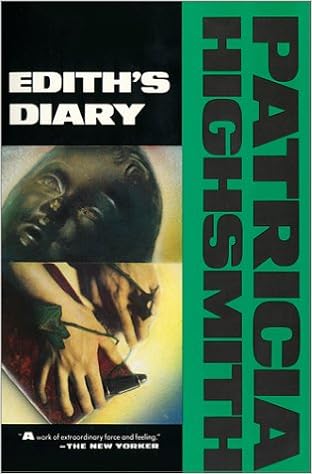

Leave a comment